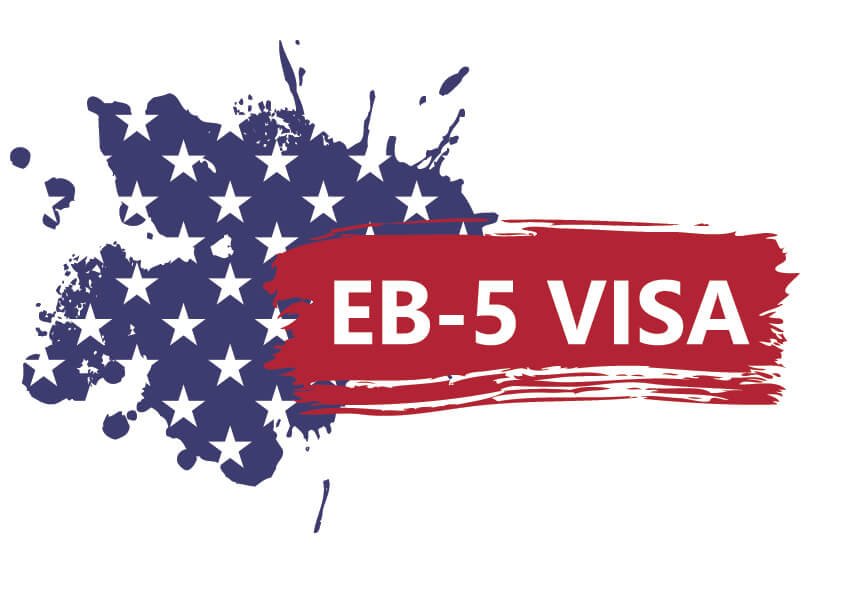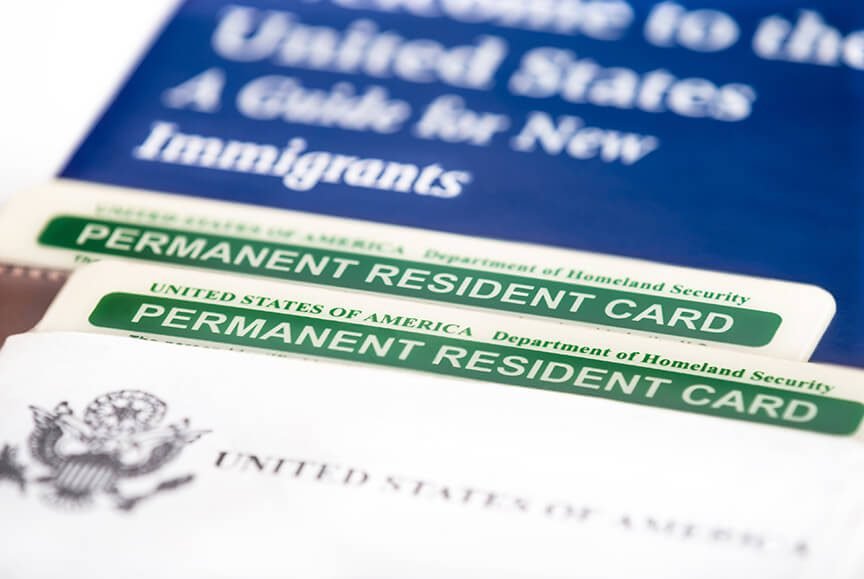The United States is undoubtedly a top country of choice for immigrants. Every year, tens of thousands of people around the world would spend a considerable amount of resources to find the easiest way to immigrate to USA. And the reasons are obvious — the country has always been a melting pot of cultures and nationalities, with a wide range of career opportunities, spectacular landscapes and the variety of lifestyles. Yet anyone who has completed the journey would tell you that immigrating to America can be a complex and challenging process. And even though there are multiple ways of gaining permanent residency (green card) in the country, each comes with its own requirements and eligibility criteria. As everyone has their own circumstances, it is important to understand the different options available and determine which one is right for you.
If you are you also thinking of immigrating to the USA, or are already in the middle of planning, you have come to the right place. In this article, we will explore the various ways to immigrate to the USA, from family-based immigration to employment-based immigration to the diversity visa program and investment-based application. Here you will find all the answers to the requirements, the costs and how to search for professional help when needed.
Let us help make your American dreams come true!

Finding the Way that Works Best for You
Like many other developed countries, there are many ways through which you can acquire permanent residency to the USA, though it is generally recognized that the green card application process have generally more stringent requirements and tends to be lengthier. You should do plenty of research to find the ways that are most suitable for your profile and family needs.
Below you will find the most common and easiest ways to become a permanent resident in the United States. In short, the US issues immigrant visas based on a few conditions, namely family ties, employment, adoption, special immigrant categories, and diversity visa. Read on to find out the requirements of each of these methods and how you can be prepared for your immigration plan.
Family-Based Immigration
This is one of the most common and least complicated way to immigrate to the United States. The good thing about this route is that any US citizen or lawful permanent residents (Green card Holders) can sponsor their relatives. The downside though is that the wait time can be extremely lengthy, and there are limits on the number of visas that are available each year.
Required Form: Form I-130 (Petition for Alien Relative)
Note that there are two main categories of family-based immigration – Immediate Relatives and Family Preference Categories. The main difference between these categories is the amount of green cards issued each fiscal year. While there is no cap to the number of family green cards issued for immediate relatives, only a limited number of applications from the family preference categories are processed each year. So for the latter group, there may be longer waiting periods that can go up to several years or even decades.

Employment-Based Immigration
This category is designed for highly skilled workers with a path to becoming lawful permanent residence. Employers can sponsor a foreign worker on his or her immigrant visa application with a job offer and if the worker meets certain requirements. Every fiscal year, about 140,000 employment-based immigrant visas are made available to qualified applicants under the provisions of U.S. immigration law.
Employment Based Preference Categories
There are five preference categories for employer sponsoring immigrant visas. They are typically being issued according to the applicant’s skills, abilities, and professions. Certain spouses and children may accompany or follow-to-join employment-based immigrants.
- Employment First Preference (E1) – priority worker and persons of extraordinary ability
- Employment Second Preference (E2) – professionals holding advanced degrees and persons of exceptional ability
- Employment Third Preference (E3) – skilled workers, professionals, and unskilled Workers
- Employment Fourth Preference (E4) – certain special immigrants
- Employment Fifth Preference (E5) – immigrant investor
Required Forms:
- Form I-140 (Immigration Petition for Alien Workers) for E1, E2 & E3 preferences
- Form I-360 (Petition for Amerasian, Widow(er), or Special Immigrant) for E4 preference
- Form DS-260/261 (Immigrant Visa and Alien Registration Application & Online Choice of Address and Agent)
Diversity Visa Program
This program, also known as the Green Card Lottery, provides visas to people from countries with historically low rates of immigration to the USA. It is conducted every year and is open to people from eligible countries, including Brazil, Canada, China (including Hong Kong SAR), Colombia, Philippines, South Korea, United Kingdom (except Northern Ireland), Vietnam, and many more others.
For more details, the Department of State publishes its detailed instructions for entering the DV Program every year. In the document you will find instructions including the dates of the registration period during which you will be able to apply.
Required Form: the Department only accepts application electronically on the Electronic Diversity Visa Program website during the specified registration period. No fees are required to register for the DV Program

The Investor Program (EB-5 Visa Program)
This program is also known as EB-5 , which is the short form for employment-based fifth preference visa. It allows foreign investors (and their spouses and unmarried children under 21) to obtain lawful permanent residence by fulfilling certain investment requirements in commercial enterprises. Typically, the investment needs to create 10 permanent full-time jobs for qualified American workers.
Required Form: Form I-526 (Immigrant Petition by Standalone Investor) or Form I-526E (Immigrant Petition by Regional Center Investor)
Special Immigrant Status
Special Immigrant Status Visa involves a variety of immigration programs that allows certain individuals who meet specific criteria to become green card holders. There are several categories of individuals who may be eligible for special immigrant status, including:
Religious Workers: People who have been working for at least two years as a minister, religious professional, or other religious worker in a non-profit religious organization in the United State may be eligible
Juvenile Dependents: For children who have been abandoned, abused, or neglected by their parents and have been placed in the custody of a state agency, or individuals who have been declared dependent on a juvenile court.
Afghan or Iraqi Translators: Individuals who have worked for or on behalf of the U.S. government in Iraq or Afghanistan as translators or interpreters.
International Organization Employees: These are people who have worked for a qualifying international organization or its family members.
Armed Forces Members: Veterans who served in the U.S. Armed Forces for at least 12 years and were honorably discharged.
There are other categories for special immigrant status, and the required documents and eligibility criteria can vary with each category. Generally speaking, applicants will be asked to provide evidence of their eligibility, such as proof of employment or military service, and undergo a background check. If you apply through this route, we recommend that you consult with an immigration attorney or the U.S. Citizenship and Immigration Services (USCIS) for specific information on eligibility requirements and required documentation for your category.
Refugee or Asylum Status
People who have fled their home country due to persecution or fear of persecution can apply for refugee or asylum status in the USA.
For a legal definition of refugee and asylum and their application requirements, you may check with U.S. Citizenship and Immigration Service (USCIS).

How Much Money Do You Need to Obtain a Green Card?
The costs of immigration to the United States can vary widely depending on the specific immigration pathway and individual circumstances. Here we have worked out some general estimates of the costs associated with different types of immigration:
Family-Based Immigration
If you are applying through family members, the cost involved can vary depending on the type of relationship and your location. As of 2021, the filing fee for the Form I-130 (Petition for Alien Relative) is $555, and the filing fee for the Form I-485 (Application to Register Permanent Residence or Adjust Status) is $1,140. Note that there could be additional fees for biometric services and other expenses, such as medical exams or translation of documents.
Employment-Based Immigrant Visas
The cost of employment-based immigration can also vary depending on the type of visa and the employer’s requirements. For example, the filing fee for the Form I-140 (Immigrant Petition for Alien Worker) is $700, and the filing fee for the Form I-485 (Application to Register Permanent Residence or Adjust Status) is $1,140. Employers may also be required to pay fees for labor certification and other related expenses.
Diversity Visa Lottery
As mentioned, there is no fee to enter the diversity visa lottery. But if you win there will be certain fees that you will be required to pay, including a visa application fee of $330 and an immigrant fee of $220.
Refugee or Asylum Status
The application for refugee or asylum status is free, but applicants may need to pay for certain related expenses, such as medical exams or translation of documents.
Naturalization
The cost of naturalization, or becoming a U.S. citizen, is currently $725, which includes the filing fee for the N-400 form, biometric services, and other processing expenses.
Note that the above fees are subject to change, and there may be additional expenses associated with each type of immigration, such as attorney fees, travel expenses, and other related costs.

Finding an Experienced Immigration Professional
With the complexity involved in the immigration application process, such as the different requirements and eligibility criteria, it is difficult to have to do this without professional help. As such, we recommend that you seek out an experienced and reputable immigration attorney or qualified immigration consultant who can help you decide which is the best option for your individual situation. Under some situation, they can also help you save money. Here are some tips:
Look for a licensed attorney
Given the how complex immigration law is, it is important to look for a licensed attorney who scan provide valuable guidance and support in this specific area.
Check their qualifications and experience
Make sure the immigration professional have relevant experience working with cases similar to yours. Check their credentials, such as their education and professional affiliations.
Ask for referrals
Ask friends, family, or colleagues who have gone through the immigration process for recommendations on immigration professionals they have worked with.
Check online reviews
Look for online reviews of immigration professionals to see what other clients have said about their experience working with them.
Meet with an Immigration Professional
Schedule a consultation with the immigration professional to discuss your case and get a sense of their approach.
Consider the cost
Immigration services can be expensive, so it’s important to understand the cost of the services upfront and consider whether it fits within your budget.

Welcome to the USA
We hope that we have given you the necessary information to take the first step to immigrating to the USA. Once you have gotten the green card, that is the beginning of your new chapter in life. And at that point, you will gradually learn all the benefits and rights of being a U.S. citizen or lawful permanent resident, finding housing, enrolling in insurance plans, adapting to the culture and creating a social life, starting job searching, etc.
Remember, these blogs are here to provide you with guidance and advice you need. So make sure you come back and check them out whenever you have any question about your new life in the USA!

